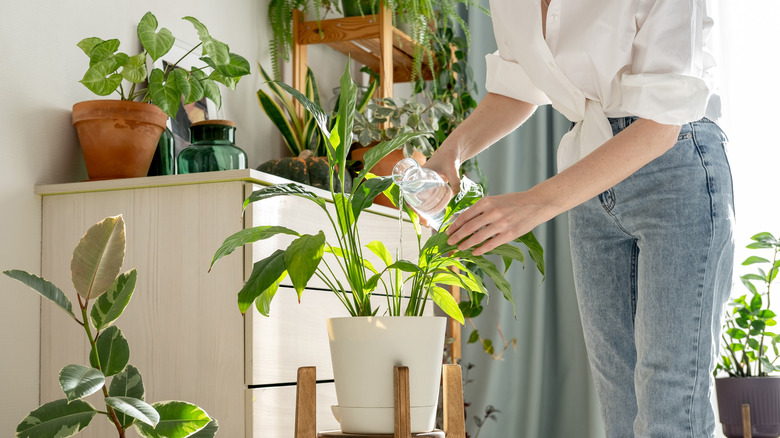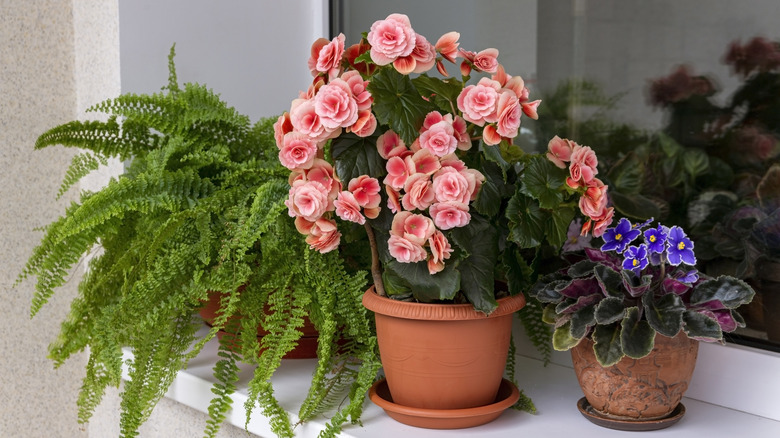Keep Your Home Smelling Fresh With A Year-Round Blooming Indoor Plant
We may receive a commission on purchases made from links.
Plants are vital to our existence as humans, but beyond that, they can help improve our quality of life. Numerous studies have shown that the presence of plants in our homes can boost air quality levels as well as overall feelings of happiness and well-being. If you're looking for a gorgeous plant that will grow easily, enhance your daily life, and add some floral fragrance to the home, you'd be hard-pressed to do better than the begonia.
Originating in regions of the world known for their tropical and subtropical climates, begonias (Begonia spp.) are known for their beautiful leaves and brightly colored flowers that come in white, red, pink, yellow, orange, and purple. Since begonias are native to warmer and more moist climates, they make a perfect indoor plant, craving year-round stability in temperature and humidity. Since many homes will keep their indoor temperature range between 60 and 75 around the calendar year, begonias' preferred 55 to 85-degree temperature range fits in perfectly. If you're looking for a beautifully fragrant variety of begonia, you may wish to try out the 'Tea Rose' variety, with its light, sweet scent, but you can also find several other perfume-emitting versions of the plant by searching for Begonia odorata. Begonias like light, especially sunlight that isn't too hot or bright; positioning your begonia close to a bright window that is filtered slightly to prevent burning the plant is ideal. Though begonias can make an ideal indoor plant, there are some care basics and precautions to keep in mind if you want to get the most out of this beautiful plant.
Indoor begonia care essentials
For begonia care starters, you'll want to ensure that you have the right container for your begonia. Most will do quite well in clay pots, which help the soil stay dry enough to prevent overwatering. You'll have your pick of adorable terracotta options with a quick online search, like this D'vine Dev 6-inch Terracotta Beaded Planter Pot. In terms of container size, you can roughly plan on a single tuber in a 6-inch pot or 2 to 3 in a 12-inch pot, being careful not to cramp your begonia's roots. Your begonias also need good soil in order to thrive, and it should consist of a combination of substances that encourage consistent draining, such as light potting soil with perlite. Soil should be kept moist, but too much water can quickly turn into rotting, so water sparingly every few days for the ideal balance.
Finally, while begonias do make a gorgeous addition to any indoor setting, they are quite toxic to animals. Both cats and dogs can experience vomiting or kidney failure if they ingest the plant. Fortunately, the most toxic part of the plant is underground, so there are ways to mitigate the chances of your pet getting their paws on it. Adding a DIY hanging planter to your ceiling can help keep it out of your pets' reach. Even with this precaution, be sure to monitor below and around the plant for any leaves or flowers that may fall into the plant's footprint. With proper care, begonias can thrive year-round, lending visual brightness and floral accents to your home.

